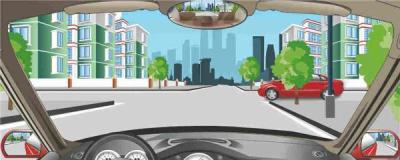1、When rescuing a wounded person suffering from spinal fracture, which of the following measuresshould be taken?
A、Prevent heat loss
B、Rescue the wounded person with a soft stretcher
C、Keep the wounded part in position with a sling
D、Help the wounded person when walking
Answer:C
2、When encountering a vehicle in front ascending on a mountainous road covered with ice and snow, what should the motor vehicle driver do?
A、Ascend after the vehicle in front passes the slope
B、Overtake the vehicle in front swiftly and drive on
C、Overtake the vehicle in front with a slow speed and drive on
D、Follow the vehicle in front closely
Answer:A
3、What should the driver do to ensure the motor vehicle passes the level crossing safely?

A、Change to neutral gear and slide over
B、Stop, look, and pass
C、Speed up, look and pass rapidly
D、Slow down, look and pass slowly
Answer:C
4、When driving on a muddy road, what should drivers do to pass at an even speed without stopping?
A、Use the handbrake
B、Press the clutch pedal
C、Press the brake pedal
D、Use the accelerator pedal
Answer:D
5、When parking temporarily in this situation, motor vehicle drivers are allowed to turn the steering wheel right to avoid sliding.

A、Right
B、Wrong
Answer:A
6、The sign on the right warns of entering a tunnel, and requires reduced speed.

A、Right
B、Wrong
Answer:B
7、What should motor vehicle drivers do when approaching an oncoming vehicle on a frozen road?
A、Cut speed as approaching each other
B、Pass each other by speeding up properly
C、Pass each other slowly by cutting speed in advance
D、Pass each other along the central line to the best
Answer:C
8、How should lamps be used by the motor vehicle driver who follows a vehicle on a road section where he street light condition is good?
A、Turn off the headlamp
B、Use high-beam
C、Turn off all lamps
D、Use low-beam
Answer:D
9、When parking for a long time on an upward slope due to breakdown on the road, drivers should use this method to stop up wheels.

A、Right
B、Wrong
Answer:B
10、The sign in front indicates a one-kilometer distance from the highway entry.

A、Right
B、Wrong
Answer:A
11、When driving on an expressway in rain, the driver should slow down to avoid steering failure arising from "water slide"
A、Right
B、Wrong
Answer:A
12、When a motor vehicle passes over an inundated road drivers should change to a high gear and pass rapidly.
A、Right
B、Wrong
Answer:B
13、The sign on the right warns for disabled people ahead.

A、Right
B、Wrong
Answer:A
14、One day, Mr. Yang drove a large bus with 57 passengers(bus capacity 55 people)from 7 pm to 1 am the following morning. At the spot of 3008 kilometers mark by 110 meters on the No. 050 National Road in Jin Chengjiang District, the bus had a malignant traffic accident caused by front left tire burst, killing12 people and injuring 22. What's the main illegal act committed by Mr Yang?
A、Fatigued driving
B、Carrying more passengers than permitted
C、Speeding
D、Misoperation
Answer:AB
15、The driver should pay attention to the left side when the motor vehicle passes this intersection.

A、Right
B、Wrong
Answer:B
16、The road marking on the right lane indicates that drivers may temporarily borrow the special lane for buses.

A、Right
B、Wrong
Answer:B
17、At this moment, the driver may speed up and pass the intersection rapidly.

A、Right
B、Wrong
Answer:B
18、The sign on the right indicates a bypass route at the intersection ahead.

A、Right
B、Wrong
Answer:A
19、This sign warns to bypass from the right side to avoid the roadblock.

A、Right
B、Wrong
Answer:B
20、What should the driver do when he/she sees this sign on the road?

A、Use emergency braking
B、Slow down and take a look
C、Sound the horn intermittently
D、Prepare to bypass
Answer:B